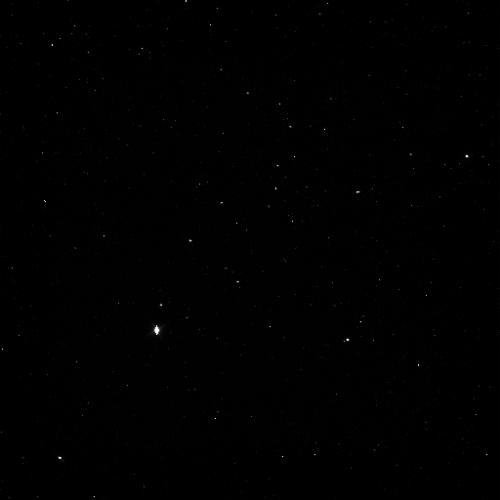Ymir
Ymir was discovered in 2000 by Brett J. Gladman, John J. Kavelaars, Jean-Marc Petit, Hans Scholl, Matthew J. Holman, Brian G. Marsden, Phillip D. Nicholson, and Joseph A. Burns at the European Southern Observatory in La Silla, Chile. They discovered Paaliaq and Kiviuq of the Inuit group at the same time.
Ymir has a mean radius of about 5.6 miles (9 kilometers), assuming an albedo (a measure of how reflective the surface is) of 0.06. It orbits Saturn at an inclination of about 172 degrees and an eccentricity of about 0.3. At a mean distance of 14.3 million miles (23.1 million kilometers) from Saturn, the moon takes about 1,316 Earth days to complete one orbit. Of the distant moons that take more than 3 Earth years to orbit Saturn, Ymir is by far the largest, nearly three times the size of its neighbors.
Ymir is a member of the Norse group of moons. These "irregular" moons have retrograde orbits around Saturn -- traveling around in the opposite direction from the planet's rotation. Ymir and the other Norse moons also have eccentric orbits, meaning they are more elongated than circular.
Like Saturn's other irregular moons, Ymir is thought to be an object that was captured by Saturn's gravity, rather than having accreted from the dusty disk that surrounded the newly formed planet as the regular moons are thought to have done.
Ymir and another member of the Norse group, Skathi, may be the sources of material that coats the dark side of Iapetus and, to a lesser extent, the surface of Hyperion.
Originally called S/2000 S1, Ymir was named for the first living being in Norse mythology, the first of a race of frost giants. Odin and his brothers killed Ymir and used his body parts to fashion the Earth. His skull became the heavens.





